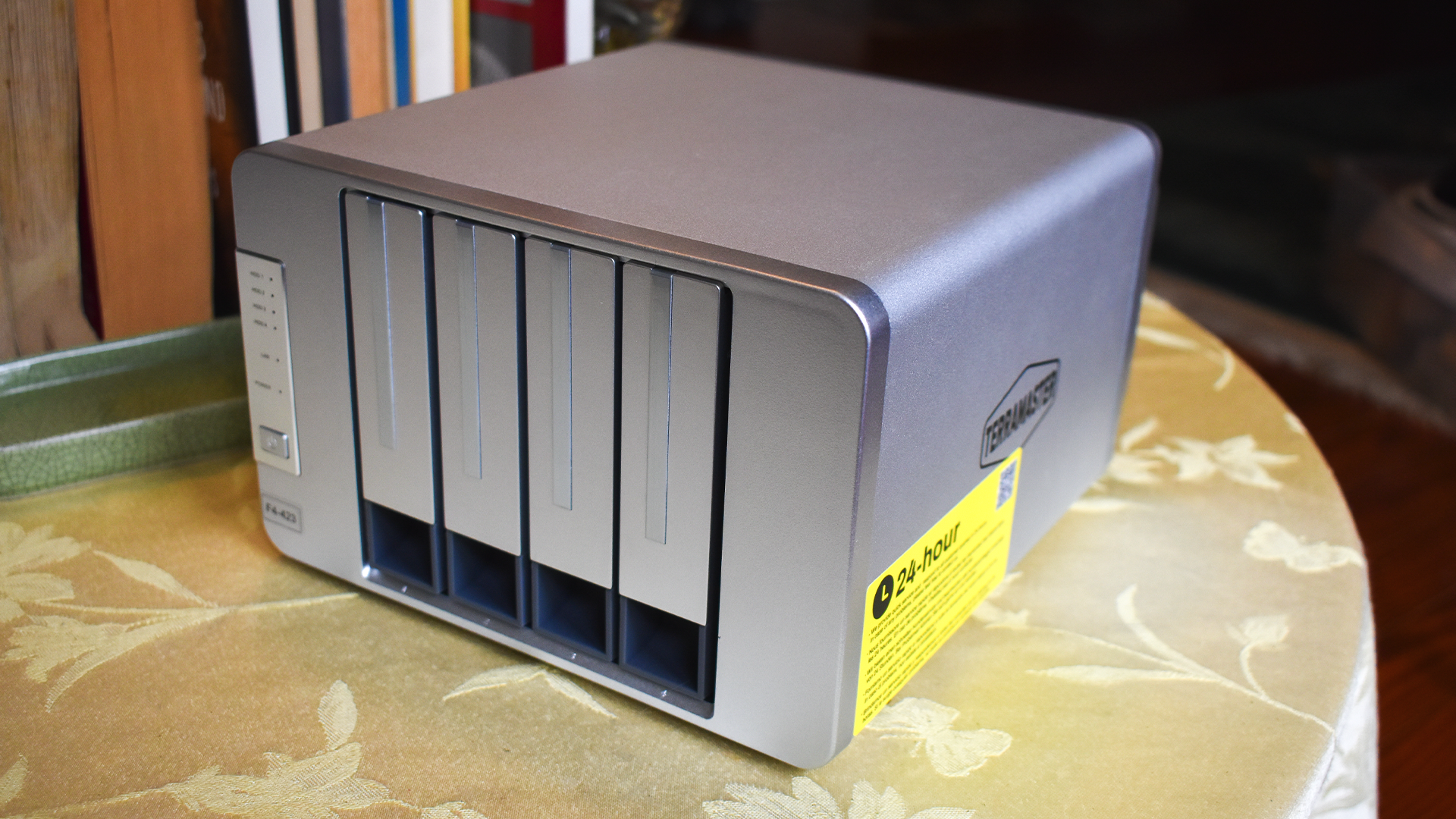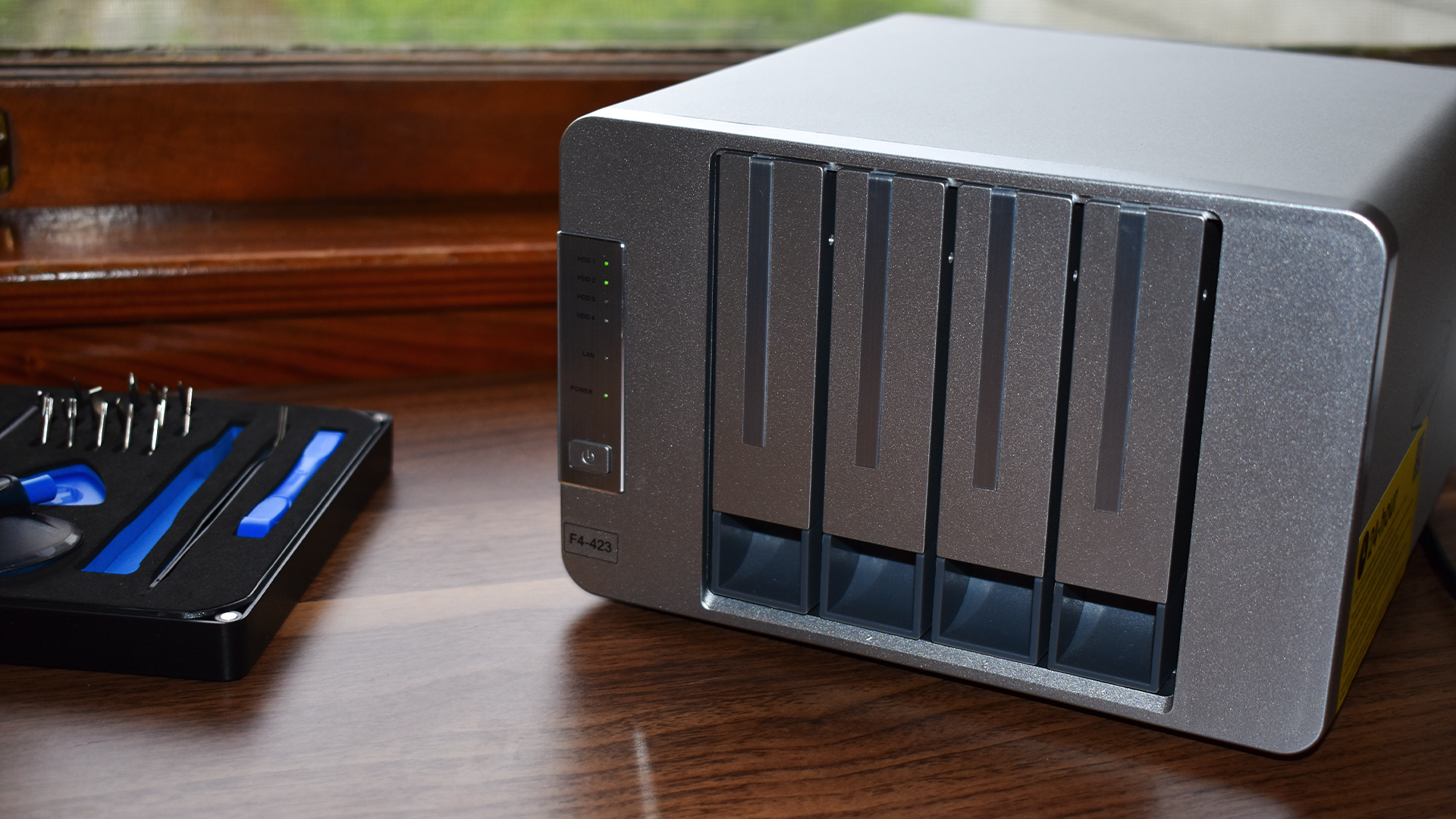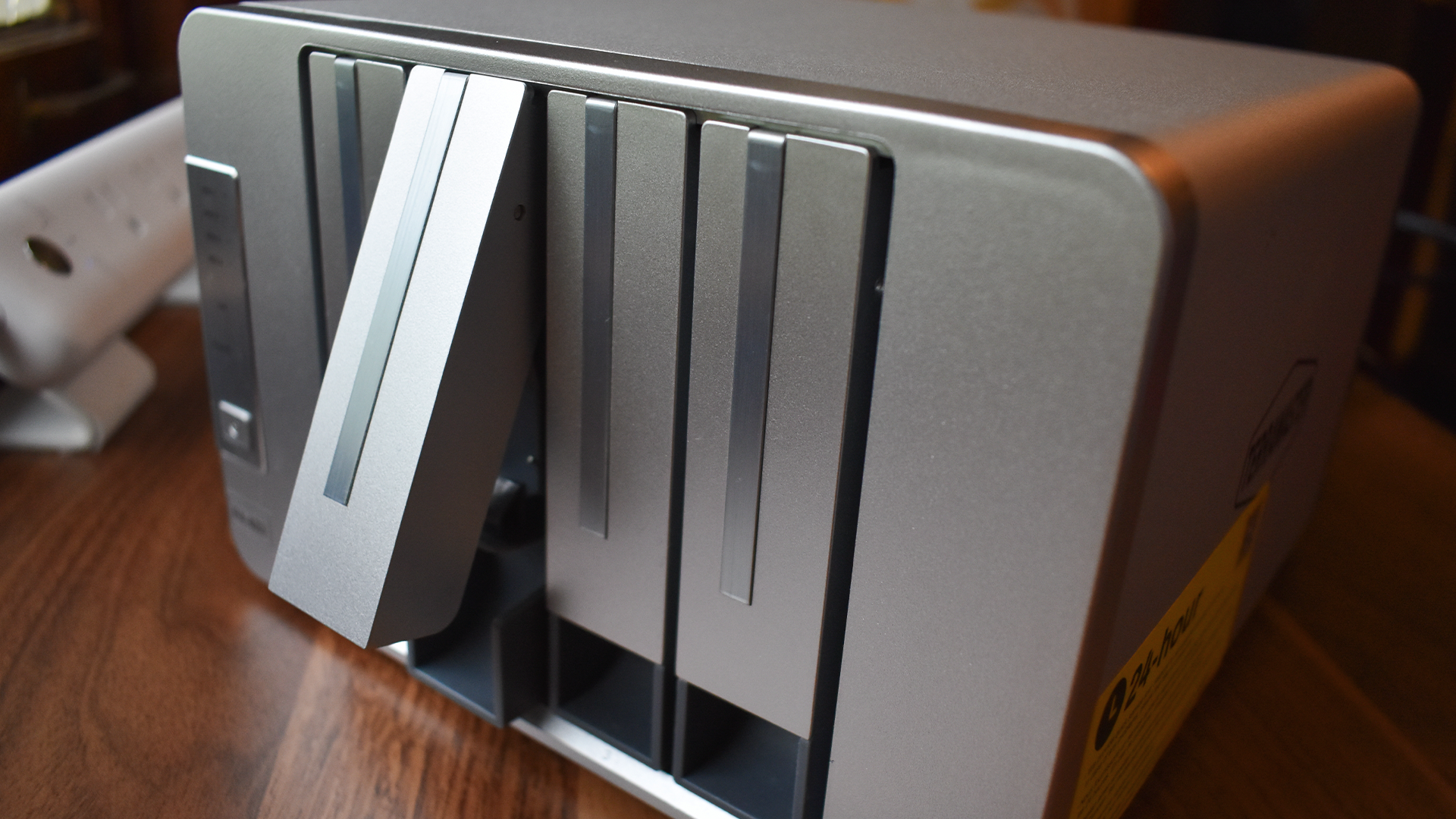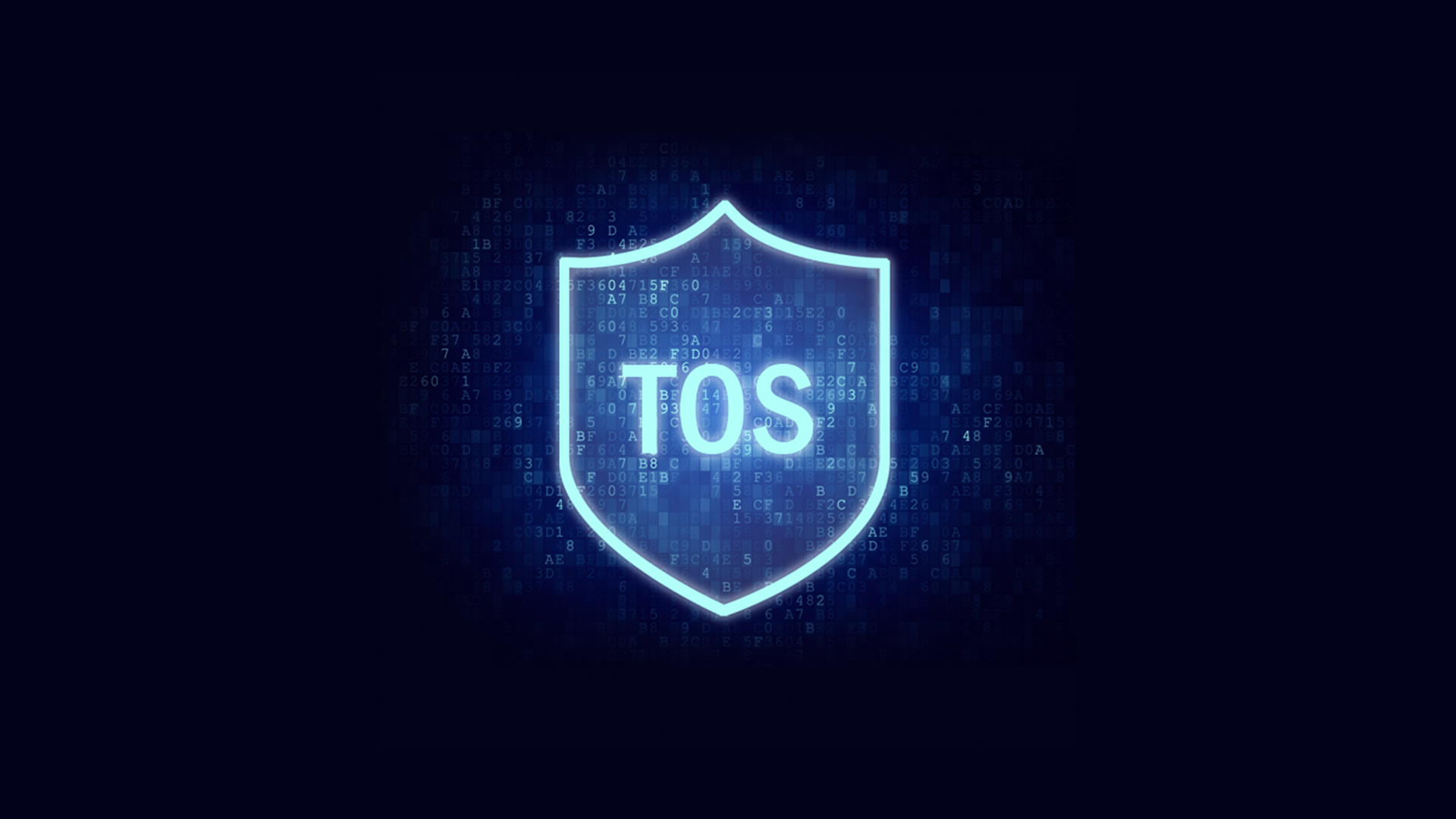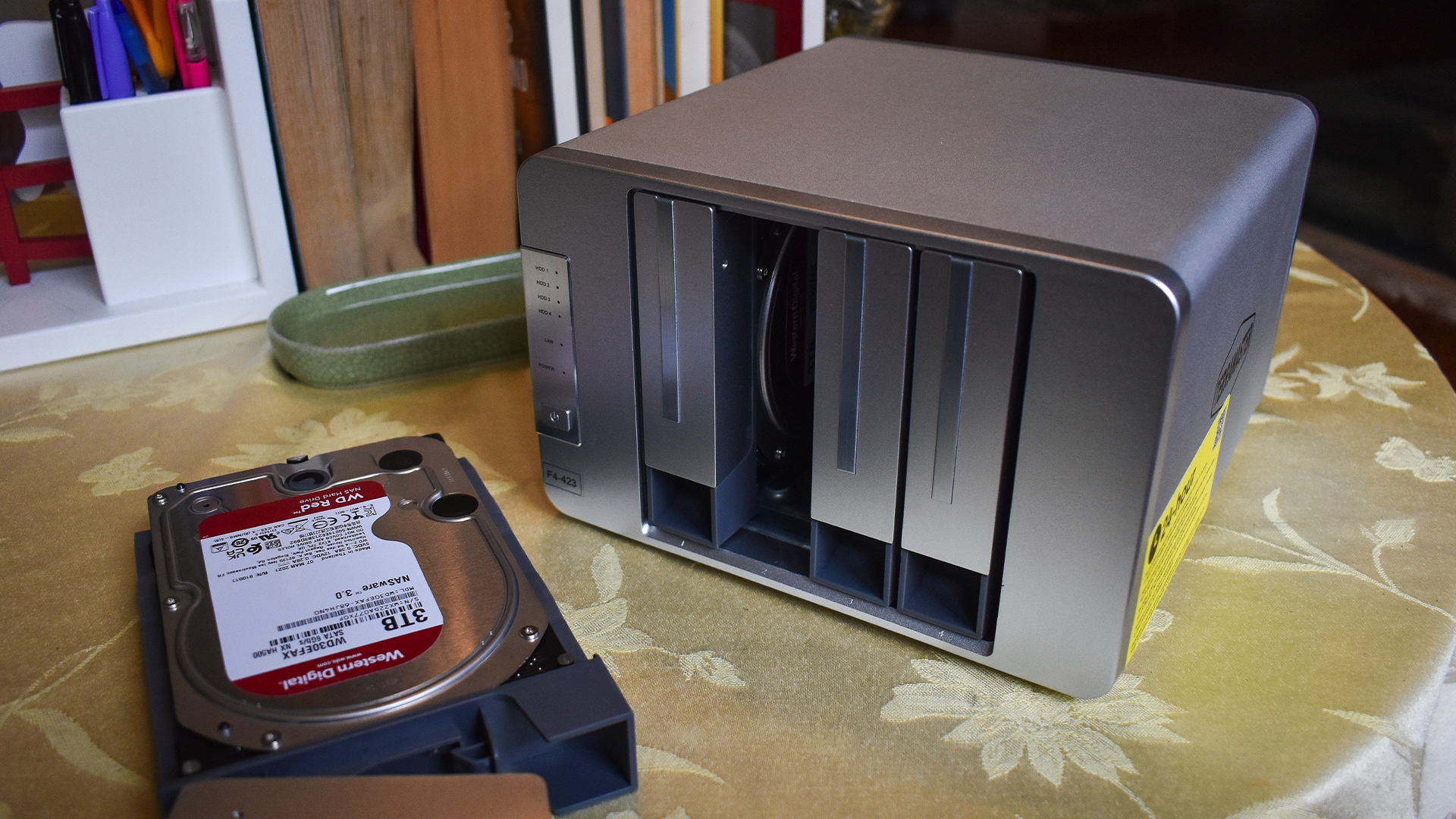Quick Links

For better or worse, TerraMaster is the "budget" NAS brand. I've always felt lukewarm about the company's products, which tend to offer a great value at the expense of performance or specs. But the new TerraMaster F4-423 seems to do away with compromises---it's an awesome little machine.
At just $500, the TerraMaster F4-423 offers specs comparable to Synology's more expensive DiskStation DS920+. Not only is it an amazing value, but it's powerful enough to handle some of the most exciting NAS projects. And shockingly, I only have a few complaints.
A User-Friendly Design with a Strong Port Selection
- Dimensions: 8.9 x 8.8 x 5.3 inches
- Weight: 7.9 pounds
- Networking: Two 2.5Gb Ethernet jacks
- USB Input: Two USB-A 3.2
- HDMI Output: Yes
- Limited Warranty: Two Years
Like all of TerraMaster's consumer-grade NAS devices, the F4-423 features easy-access drive bays and an aluminum enclosure that gets scratched easily. It's slightly larger than the black-box NAS devices from brands like Synology, but it's still small enough to tuck in an entertainment center or squeeze in the corner of a desk.
You don't need any tools to install hard drives or SSDs in the F4-423. But you need to disassemble the whole machine if you want to upgrade the RAM (up to 32GB) or install a drive in the M.2 slot (which would give you really fast cache, not extra storage). While I'm happy to see upgradable RAM and an M.2 slot in such an affordable product, I don't want to take apart a whole freakin' NAS unit just to shove in some extra RAM.
The front side of the F4-423 looks pretty unimpressive, save for an LED panel that tells you the status of each drive bay. Really, TerraMaster hid the whole party on the rear end of this enclosure---two USB-A 3.2 ports, two 2.5Gb Ethernet jacks (with link aggregation support), and an HDMI output!
This port selection is very impressive for the price. But I wish TerraMaster placed a USB port at the front of this enclosure. Reaching around the back is awkward, especially if you place the NAS device in a tight-ish space.
And, of course, I need to give TerraMaster brownie points for making such a quiet enclosure. The two 80mm fans at the back of this unit rarely reached an audible level, and TerraMaster did a great job isolating hard drive vibration.
Reliable Backup and Storage Capabilities
- Processor: Intel Celeron N5105/N5095 (Quad Core 2.0 GHz)
- Memory: 4GB RAM (upgradable to 32GB with two RAM slots)
- Drive Bays: Four (3.5-inch or 2.5-inch)
- Storage Capacity: Maximum 80TB (four 20TB drives)
- Drive Hot-Swap: Yes
As a NAS solution, the F4-423 just does its job. It's an effective and reliable product. I had no trouble transferring files to and from the F4-423 using the SMB protocol on my MacBook or Windows desktop (which adds the F4-423 to your filesystem). The mobile app (Android/iOS) is ugly, but I have no other complaints.
The F4-423's four drive bays can support up to 80TB of storage. But more importantly, using several drives ensures a high level of file redundancy with RAID (plus faster data transfer through concurrent streams). If one drive has a catastrophic failure, your data is safe on the other drives---this is contingent on the RAID scheme you use, so do your research.
Setting up this device is fairly easy, especially if you only need to use it for backups. By default, TerraMaster's TOS 5 software contains several backup tools for Windows, macOS, Android, and other popular operating systems. You can also integrate it with services like Dropbox for automatic cloud backups.
And in terms of speed, the F4-423 is up there with the best of them---it's got 2.5Gb Ethernet ports! With link aggregation, that's a total 5Gb of network bandwidth. Of course, I don't have the enterprise-grade networking equipment to take full advantage of these specs, but I found that the F4-423 quickly transfers even the largest files.
Additionally, the F4-423's Intel Celeron N5105/N5095 processor enables faster file retrieval than previous TerraMaster devices. Compared to the F4-421 (this device's predecessor), we're looking at a 37% increase in file retrieval speeds and 35% faster database response time.
An Impressive Plex Media Server for the Price
- Processor: Intel Celeron N5105/N5095 (Quad Core 2.0 GHz)
- Hardware Transcoding: H.265 (HEVC), MPEG-4 Part 2, MPEG-2, VC-1
- Transcoding Limitations: Maximum 4K resolution 60 FPS
The TerraMaster FR-423's predecessor, the F4-421, wasn't really powerful enough to handle 4K video transcoding. It also lacked some quality-of-life features that Plex users enjoy. But to my surprise, the TerraMaster F4-423 is a solid Plex Media Server solution.
This NAS device's Intel Celeron N5105/N5095 processor is perfectly capable of transcoding 4K video. In my tests, hardware transcoding works flawlessly on the F4-423, even with concurrent streams. You shouldn't encounter any bottlenecks when streaming within your home, though things can get a bit rocky when hosting multiple remote streams, which often resort to transcoding because of bitrate constraints.
Now, if you refuse to pay for Plex Pass, you're stuck with software transcoding. And in my tests, the F4-423 hits a brick wall when transcoding 4K or FHD video using software protocols. But I wouldn't call this a serious problem, as Plex Pass is pretty dang cheap.
I also appreciate the F4-423's port selection, which only enhances the Plex experience. The pair of 2.5Gb LAN ports ensures speedy upload and download speeds even with mechanical hard drives or flash storage. And the integrated HDMI jack lets you plug the F4-423 into a TV and use it as a media player---it's more than just a server!
And of course, this is a four-bay NAS. It has a maximum storage capacity of 80TB and offers quite a bit of redundancy with RAID. That's plenty of space (and a decent amount of protection) for your movie collection.
I'm Still Not Sold on the Operating System
- Operating System: TOS 5
Like all consumer NAS devices, the TerraMaster F4-423 runs a proprietary operating system with a simple Windows-like GUI. You can access this operating system at any time by typing your NAS device's IP address in a browser and punching in your login credentials. (You can also use TerraMaster's desktop software to quickly access the in-browser GUI.)
We've always criticized TerraMaster's TOS operating system. It's janky, but more importantly, it lacks the features and the security of Synology and QNAP's software. While this might not matter to the average user, power users should consider installing a third-party OS.
To be clear, the F4-423 comes with TerraMaster's new and improved TOS 5 software. The GUI seems to load faster than in previous versions of TOS, and TerraMaster added some much-needed features (including the "TRAID" flexible RAID system, upgraded resource monitor, and unique isolation mode). These are useful upgrades, but TerraMaster still has a lot of work ahead of itself.
App selection in the TOS 5 store is decent, but it falls behind the competition. And good luck installing any software that isn't on the app store. TerraMaster's operating system is Linux-based, but standard services are renamed and obscured to a point where the terminal is a major frustration. Hence the popularity of third-party operating systems.
To TerraMaster's credit, security seems to be a focus of the TOS 5 platform. New features like Self-Isolation Mode and OPT Authorization should reduce the risk of ransomware attacks, which have grown increasingly common on TerraMaster devices over the last few years. (There's also a security advisor that pops up when your first install TOS 5, although it doesn't explain why certain security systems should be enabled or how these systems work.)
But here's the thing; every NAS device is a potential target for ransomware, especially when remote access is enabled. A NAS device is convenient, but it isn't a one-and-done backup solution. That's why data redundancy is so important. Recovering from a ransomware attack is a lot easier when you have backups for your backups!
If you upload important data to your NAS device, you should copy that data to at least two external sources. TerraMaster's new backup and sync tools will get the job done, so long as you can afford an external drive or some cloud storage.
The Gist: It's a Steal
While I'm not a fan of TerraMaster's operating system, the F4-423 is a fantastic little machine. It runs a solid processor, comes with a killer port selection, and can store up to 80TB of data with four 20TB drives.
And more importantly, the F4-423 costs just $500. It's the most affordable four-bay NAS device in its performance category, undercutting the Synology DiskStation DS920+ by $50. Unless you're committed to Synology's software, I can't see a reason not to buy the TerraMaster F4-423.
My final piece of advice applies to all NAS devices---learn how this stuff works. Look into RAID, security protocols, and operating systems. Not only will you get more out of your NAS device, but you'll have a better understanding of how to secure important files when something inevitably goes wrong.
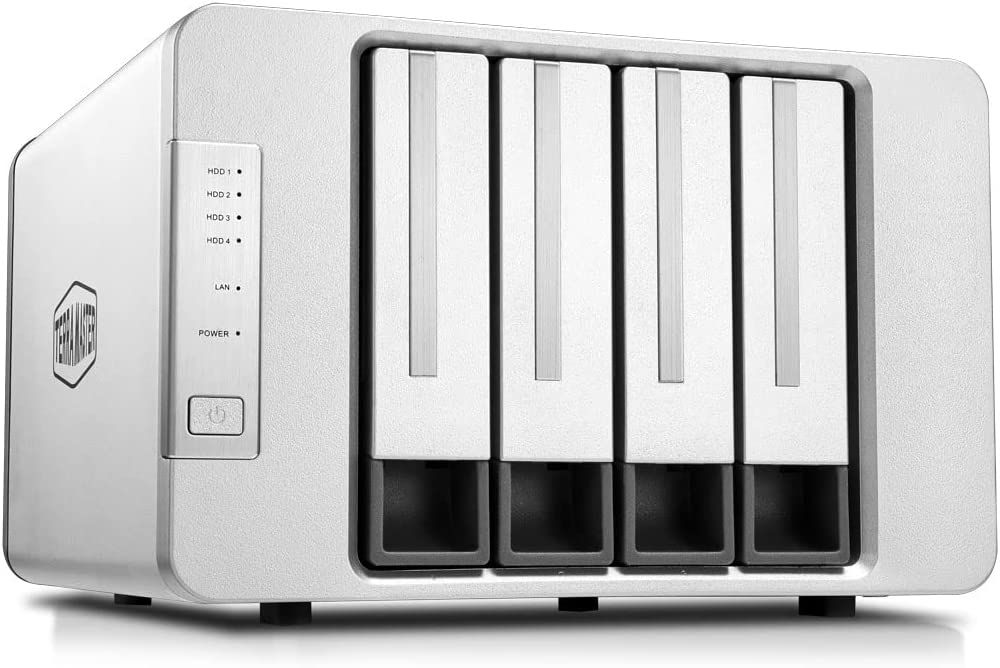
TerraMaster F4-423
- Great value for four drive bays (up to 80TB total)
- Two 2.5Gb LAN ports with link aggregation support
- M.2 slot and upgradable RAM (up to 32GB)
- Native 4K video transcoding, great for Plex
- RAM or M.2 access requires a full disassembly
- TerraMaster's OS still isn't great

